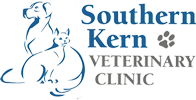Feeding your pet is more than filling their bowl and satisfying their appetite. Proper nutrition is essential for fueling the body, maintaining a healthy weight, and supporting overall health. However, navigating the world of pet food can be overwhelming, with countless brands and types available, each boasting various health benefits. Understanding how to read a pet food label is crucial in making an informed choice that meets your pet’s nutritional needs. Our team at Southern Kern Veterinary Clinic explains how to decipher key information on pet food labels, so you can choose the best option for your pet.
Why your pet’s nutrition matters
High-quality nutrition is the foundation for your pet’s short- and long-term health. Food is critical for your pet’s day-to-day function, as well as to fuel their development, age-related changes, and immunity. Nutrition’s many benefits include:
- Strengthening the immune system
- Promoting growth and development
- Providing building blocks for cell formation
- Supporting healthy digestion
- Nourishing the skin and coat
- Delivering energy for countless internal processes, brain and nervous system function, and physical activity
How to read a pet food label ingredient list
A pet food label ingredient list is an information treasure trove, detailing every component included in the food. All ingredients, including additives, are listed in descending order by weight and not nutritional content, so some nutrient-dense ingredients may be lower on the list. These are the most common pet food ingredients:
- Meat — If the first item listed is a meat, such as beef or pork, the meat is not dehydrated and may contain 75% water. In other words, the food contains more water than meat.
- Bone or chicken meal — Meal describes a concentrated protein product that has most water and fat removed. Meal products may contain dehydrated muscle meat and byproducts.
- Byproducts — Byproducts are the parts of an animal people generally do not eat, such as organs, feet, and bone, but not inedible parts, such as feathers, hair, horns, or hooves. However, byproducts are safe for pet consumption and provide substantially more key vitamins and minerals than muscle meat. All byproducts used in pet food are inspected for safety and quality by the United States Department of Agriculture (USDA).
What information is included in the pet food label guaranteed analysis
This analysis is included on labels because pet food companies are required by law to list the food’s protein, fat, fiber, and moisture content. Some companies provide additional information such as calcium and phosphorus percentages. Dogs and cats require a diet that offers at least 10% protein and 5.5% fat. Pet foods intended for weight loss will be closer to these minimums and will contain higher fiber amounts to make the food more filling without adding calories. Caloric content, unfortunately, is rarely listed, which can complicate comparisons between different foods.
Why a pet food nutritional adequacy statement matters
Pet foods are regulated by the Food and Drug Administration (FDA) for safety, and by the Association of American Feed Officials (AAFCO), which monitors adherence to established regulations. The nutritional adequacy statement indicates whether a pet food meets the minimum nutritional requirements established by regulatory bodies. Look for phrases such as complete and balanced or meets the nutritional levels established by the AAFCO for life stage.
How to use pet feeding guidelines
The pet food label feeding guidelines recommend the daily amount of food your pet requires based on their weight. However, keep in mind that these guidelines are generous and often designed for highly active pets. While the guidelines are a good starting point, you will need to adjust the portions according to your pet’s individual needs, such as their activity level and metabolism. Use a calorie counter to calculate your pet’s caloric requirements accurately.
Where to find manufacturer information on pet food labels

Contact information is provided for transparency and for your questions. Turn to the manufacturer for any additional questions you have about their product. Useful information-gathering questions include those listed by the World Small Animal Veterinary Association (WSAVA).
Navigating the pet food industry can be overwhelming, but our team is here to support you. We can provide nutritional counseling during your pet’s routine wellness visits and by request to
help interpret the information on your pet’s food label. For help choosing the most nutritious diet for your pet, contact our team at Southern Kern Veterinary Clinic.







Leave A Comment